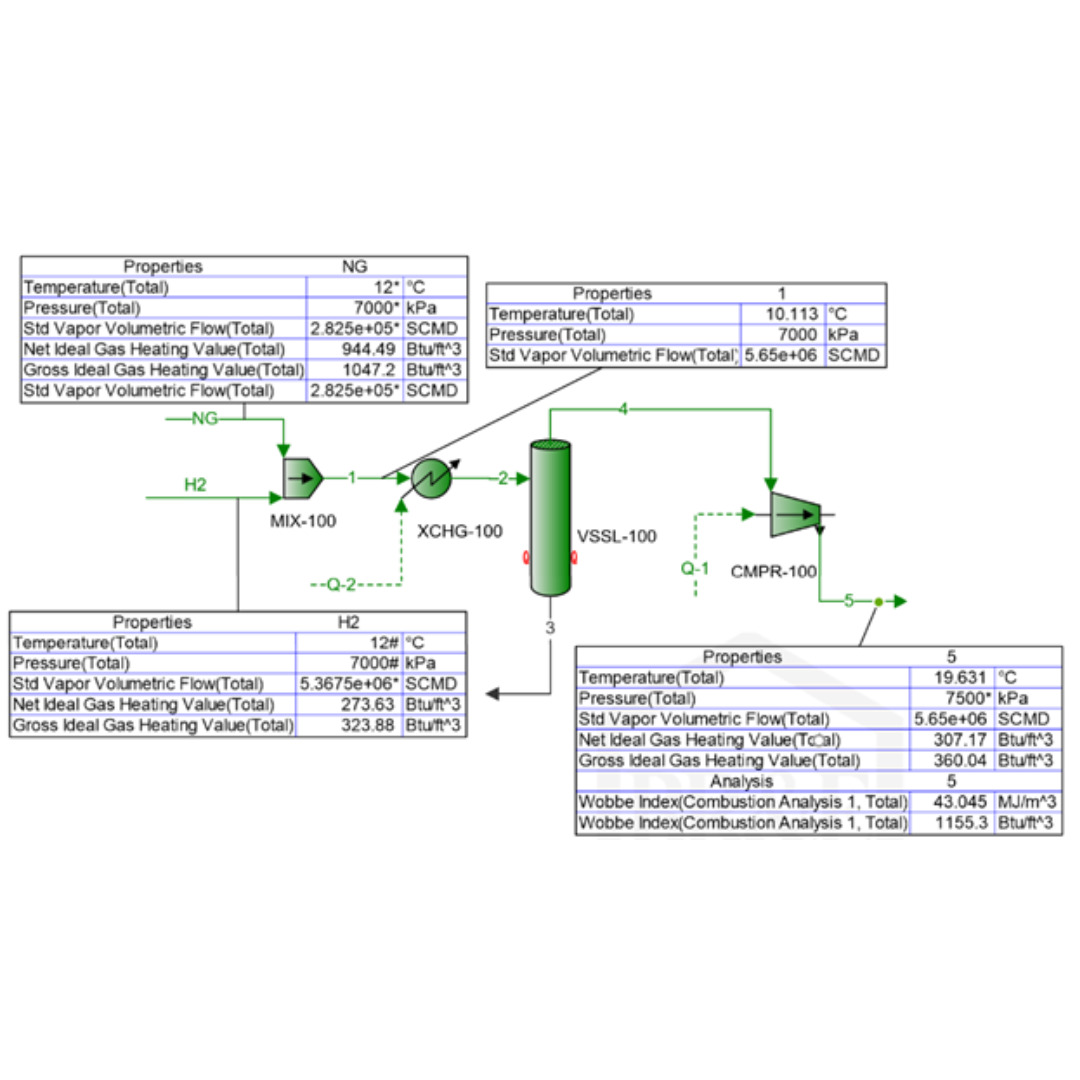In some cases, a choke/line heater is required at the wellsite to deal with the large JT expansion cooling effect experienced by choked high-pressure wells, especially during start-up. This is a somewhat different application than prevention of hydrates in the GGS but there are some common aspects to the equipment utilized. First, the hydrate temperature of the flowing wellstream is estimated. From Figure 1, for 0.65 SG gas and assuming any free water present is condensed/fresh water, the estimated hydrate temp at an assumed average GGS pressure of 1,100 psig is ~ 65 F. [Keep reading]
Our Blog
Part 1 : Shale gas is typically considered an “unconventional” resource, along with tight gas and coalbed methane. Of these three, coalbed methane (CBM) has several characteristics that make it quite different than shale gas and tight gas, including: shallow depth, low pressure and temperature, and the need for a significant early life “de-watering” stage. As a result, CBM developments have some considerably different aspects to them and will not be discussed further in this article. [Keep reading]
By 2020, many companies had already begun attempts to transition their training from face-to-face and add more e-learning and virtual delivery, but the COVID-19 pandemic hastened these companies to make their move with immediacy! Additionally, the industry’s financial health, used to previous highs and lows of economic cycles, faced an oil price decline in the beginning of 2020 that was coupled with a collapse in demand due to COVID-19 restrictions unlike other times. This case study is about how one company successfully converted key operator training from Face-to-Face to Blended quickly and inexpensively in response to COVID-19 concerns by using PetroSkills ePilot e-learning to deliver awareness and knowledge-level content. [Keep reading]
Existen tres unidades claves de procesamiento, vis. Unidad de Remoción del Gas Acido (AGRU/URGA), Unidad de Deshidratación por Tamices Moleculares (MSDU/UTMD), y la Unidad de Remoción de Mercurio (MRU/URM) que son comunes tanto en el procesamiento del gas, así como facilidades del GNL. En este Previo del Mes (PDM), se analizaran algunos problemas operacionales asociados con estas unidades de proceso, y las acciones de solución en sitio (troubleshooting) de estas circunstancias operacionales. La clave para lograr una operación exitosa de estas unidades es el entendimiento de los parámetros que ocasionan la problemática operacional y como detectar estos en la fase de diseño del proyecto. [Keep reading]
There are three key processing units, viz. Acid Gas Removal Unit (AGRU), Mol Sieve Dehydration Unit (MSDU) and Mercury Removal Unit (MRU) that are common in both gas processing, and LNG facilities. In this TOTM, we discuss some common operating problems associated with these process units and suggests ways to troubleshoot the root cause of these operational issues. The key to successful operations of these units is the understanding of the parameters that cause the primary operational issues and address these at the design stage of the project. [Keep reading]

Let me introduce you to one of our incredible instructors, Kindra Snow-McGregor. Kindra is the Technical Director of Oil and Gas Processing at PetroSkills | John M. Campbell and is the instructor for a lengthy list of courses including Overview of Gas Processing - G-2, Gas Conditioning and Processing - G-4, and all of our G-4 Short Courses, to name just a few. Here are Kindra’s answers to some fun questions to help you get to know her more on a personal level. [Keep reading]





